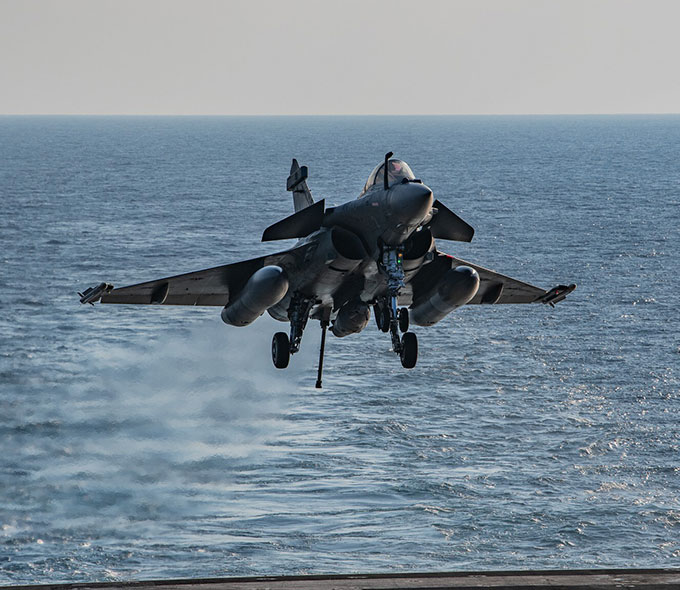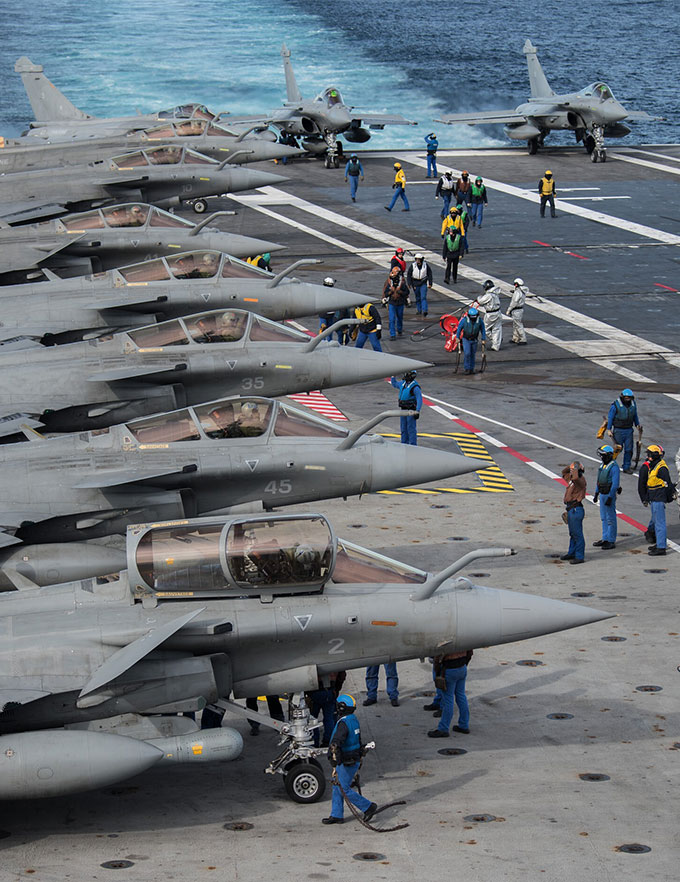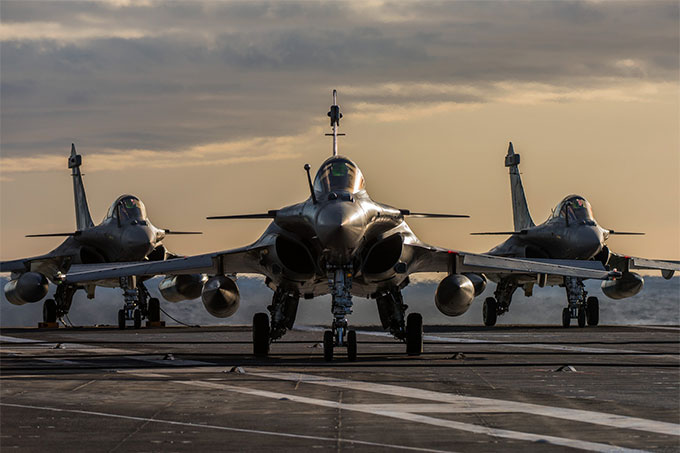
|
|
© Dassault Aviation - C. Cosmao |
|
Dassault Aviation has a long experience designing and producing naval aircraft. Since the fifties, the Alizé carrier-born surveillance aircraft, the Étendard light fighter, the Atlantic 1 and Atlantique 2 maritime patrol aircraft, the Super Étendard strike fighter, the Falcon 20, 200 and 50 maritime surveillance aircraft and the Rafale omnirole fighter have all come out of the various Dassault Aviation production lines and have successfully served with French and foreign operators, gaining an enviable reputation of combat efficiency and technical reliability. |
01A totally versatile aircraft |
|
The combat-proven Rafale M (for Marine, naval in French) variant is optimised for sustained combat operations at sea, in both littoral and blue water environments. The new fighter was specifically designed to operate from aircraft carriers in the 40,000-tonne displacement class, and to undertake an extremely wide range of air-to-air and air-to-surface missions with a single-seat aircraft: air defence of the task force, air-superiority in a contested environment, destruction of enemy air defences, attacks of strategic targets deep inside enemy-held territory, anti-ship strikes, battlefield air interdiction, close air support of troops in contact, pre-strategic and tactical armed reconnaissance, buddy-buddy refuelling and nuclear deterrence with a standoff nuclear missile. The Rafale M is able to operate either from CATOBAR (Catapult Assisted Take-Off But Arrested Recovery) Aircraft Carriers or from STOBAR (Short Take-Off But Arrested Recovery) Aircraft Carriers. |
02Advanced airframe with unmatched payload |
|
The Rafale offers a payload / empty ratio unmatched by any other fighter in the world. This translates into huge load carrying capabilities and, in turn, into enormous fire power and unrivalled range for such a compact airframe. The naval Rafale M is cleared to carry up to 9,500 kg of weapons, pods and fuel tanks under 13 external hardpoints spread under the fuselage and the wings. The number of hardpoints is high enough to carry at the same time a large array of drop tanks, of air-to-air missiles and of air-to-surface precision munitions, minimising the need for dedicated escort assets for a long-distance raid, the Rafale being capable of fighting its way in through a screen of enemy fighters before delivering missiles or guided weapons at land or naval targets with clinical accuracy. |

|
|
© Dassault Aviation - C. Cosmao |
03Advanced multisensor, multispectral suite |
|
The Rafale has been fitted with the largest possible range of sensors to offer overlapping detection capabilities in various wavelengths in order to increase the likelihood of an early detection of a threat, including stealth designs. The multisensor suite enables the fighter to operate either in an active mode, with the radar on, or in an entirely passive mode, with the radar off. |
04Data fusion ahead of its time |
|
In order to exploit to the full the formidable combat capabilities of its multispectral sensor suite and of its air-to-air and air-to-surface weapons, the Rafale required a powerful data procession / data fusion system that would allow the aircrews to more easily focus on their mission and on their tactics. The Rafale is, above all, an airborne sensor and Dassault Aviation and the French Armed Forces made sure the fighter could absorb, manage, process and display the enormous quantity of data it collected at any time. Considerable efforts were made to develop for the pilot an advanced cockpit environment that would prove efficient for air-to-air and air-to-surface engagement while being comfortable enough for long-duration missions. Reducing aircrew workload and fatigue was a key driver for the development of this advanced data fusion system that is second to none thanks to extremely powerful algorithms. The Rafale’s data fusion system analyses in real time all data available from the various on-board and off-board sensors: it automatically selects the best data, correlating the information and presenting it to the pilot in a clear, concise and unambiguous manner. |

|
|
© Dassault Aviation - C. Cosmao |
05
Supported by the French Navy:
|
|
Thanks to Dassault Aviation’s exceptional success on the export market since 2015, the Rafale has become a new reference for the discerning customer and a best seller in a challenging and highly competitive fighter market. The fighter is in high demand and Rafale production will continue for many more years to come. The fighter is expected to remain in service until the 2060s and the French Defence Procurement Agency is currently undertaking comprehensive trials to extend the life of the airframe even further, allowing the type to remain in service far longer than initially envisioned. From the start of its design process, the Rafale was developed to easily incorporate new weapons, new sensors and new systems continuously, thus helping ensure the fighter remains fully relevant well into the distant future. |

© 2022. Dassault Aviation. All rights reserved. |